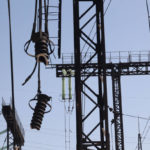The new Ukrainian loitering munition is designed to fill the same niche as the Russian "Lancet," delivering precise strikes on important combat vehicle units from a great distance from the front line.
As reported by “Militarny”, the drone, whose name remains secret for now, is already being used at the front lines. Among its achievements is the successful strike on a Russian anti-aircraft missile system.
In the future, this new development is expected to become a means of destroying targets both on the ground and in the air due to its speed and powerful warhead. The new Ukrainian loitering munition aims to fill the same niche as the Russian “Lancet”, delivering precise strikes on important combat vehicle units from a great distance from the front line.
Like most drones, it has an electric motor and is launched from a catapult, making its use straightforward for operators.
The new X-shaped fuselage provides the drone with high maneuverability and the ability to strike both static and moving targets on different trajectories. It is capable of approaching a target at a right angle. Depending on the chosen target, the drone can carry a warhead weighing up to 3 kilograms.
It comes in various versions: fragmenting, thermobaric, or armor-piercing with a penetrating core. The latter can penetrate up to 40 mm of armor and cause serious damage to vehicles, generating a large number of secondary fragments upon penetrating the hull. To intercept aerial targets, the drone will be equipped with a fragmenting warhead. The explosive wave and fragment stream are intended to destroy the fuselage of an enemy reconnaissance drone, thereby bringing it down.
The maximum speed of the drone does not exceed 180 km/h, making its primary “targets” slower-moving objects, less than 130 km/h. These include Russian “Orlan-10,” Zala, and “Lancets.” Thanks to a repeater, the loitering munition can operate at long distances with good communication. Using it, the operator can bypass the “radio horizon” phenomenon and maintain video signal and control over the drone until it hits the target.
Currently, the drone system is in the testing phase under constant launches and applications in the combat zone.
Photo: open sources






























